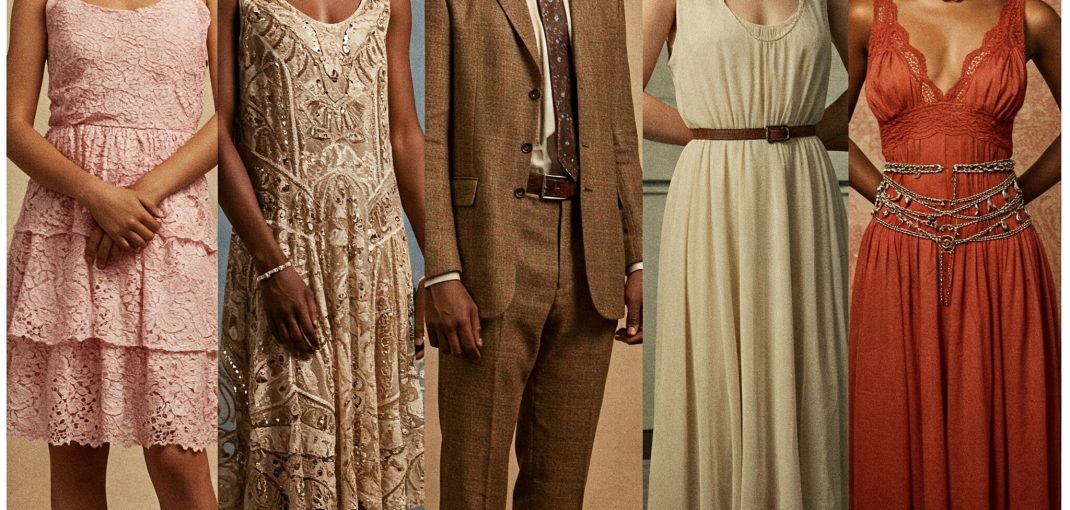Fashion, at its core, transcends the mere act of covering the body. It is a dynamic and multifaceted phenomenon, deeply interwoven with culture, society, history, and individual expression. More than just trends dictated by designers and runways, fashion serves as a powerful visual language, communicating identity, status, beliefs, and aspirations. Its ever-evolving nature reflects the constant shifts in our world, making it a perpetually fascinating and influential force.
Throughout history, fashion has acted as a mirror to societal structures. In ancient civilizations, clothing often denoted social hierarchy and occupation. Elaborate robes and precious materials were reserved for royalty and the elite, while simpler garments characterized the working classes. The Renaissance saw the rise of opulent fabrics and intricate tailoring, reflecting a period of artistic and economic flourishing. The subsequent centuries brought about significant transformations, influenced by industrialization, political upheaval, and changing social norms. The French Revolution, for instance, ushered in a period of more understated and practical clothing, a stark contrast to the extravagant styles of the aristocracy.
The 20th century witnessed an unprecedented acceleration in the pace of fashion change. The flapper dresses of the Roaring Twenties symbolized newfound freedom and rebellion for women. The utilitarian styles of the World War II era gave way to the glamorous silhouettes of the 1950s. The youthquake of the 1960s brought vibrant colors, bold patterns, and a rejection of traditional sartorial rules. Each decade carried its own distinct aesthetic, reflecting the prevailing social, political, and cultural climate. From the bohemian chic of the 1970s to the power dressing of the 1980s and the grunge and minimalist movements of the 1990s, fashion has consistently served as a visual marker of its time.
Today, fashion exists in a state of constant flux, fueled by globalization, technological advancements, and a heightened awareness of environmental and social issues. The rise of social media has democratized fashion, allowing individuals to become both consumers and creators of trends. Influencers and bloggers have emerged as powerful voices, shaping tastes and disseminating styles at an unprecedented speed. The traditional top-down model of fashion, where designers dictate trends, has become increasingly porous, with street style and individual expression playing a more significant role.
Furthermore, the fashion industry is grappling with critical questions regarding sustainability and ethical practices. The environmental impact of fast fashion, with its rapid production cycles and disposable garments, has come under scrutiny. Consumers are increasingly demanding transparency and accountability from brands, seeking out eco-friendly materials, ethical labor practices, and circular fashion models. This growing consciousness is driving innovation within the industry, with designers and brands exploring sustainable alternatives and promoting mindful consumption.
Beyond its societal and environmental implications, fashion remains deeply personal. The clothes we choose to wear are a powerful form of self-expression, allowing us to communicate our individuality, our affiliations, and our moods. Whether it’s a carefully curated outfit for a special occasion or a comfortable ensemble for everyday wear, our sartorial choices reflect our personal narratives. Fashion can be a source of confidence, creativity, and even empowerment. It allows us to play with different identities, to experiment with aesthetics, and to connect with like-minded individuals.
The relationship between fashion and art is also undeniable. Many designers draw inspiration from various art movements, incorporating artistic concepts, techniques, and aesthetics into their creations. Fashion exhibitions in museums have gained immense popularity, recognizing clothing as a significant form of artistic and cultural heritage. The intricate craftsmanship, the innovative use of materials, and the conceptual vision behind many fashion collections elevate clothing beyond mere functionality to the realm of artistic expression.
In conclusion, fashion is far more than just the clothes we wear. It is a complex and dynamic tapestry woven from threads of history, culture, society, and individual expression. It reflects our times, shapes our identities, and sparks our creativity. As the world continues to evolve, so too will fashion, constantly adapting to new technologies, addressing pressing social and environmental concerns, and ultimately, continuing to serve as a powerful and personal form of communication. The story of fashion is an ongoing narrative, and each individual plays a part in its ever-evolving chapters.


